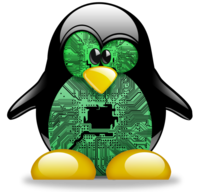My project: eatmemory - is your computer hungry?
2023-11-07 by: flushy@flushy.net
From: flushy@flushy.net ------------------------------------------------------ I've been playing around with this project that I originally wrote in 2003 to help test different task schedules in the CK-Linux kernel - a particular interesting kernel available to gentoo at the time which focused on lowering latency and improving user interaction. I've had some needs lately: simulating loads in kubernetes clusters. So I updated the project. https://github.com/gonoph/eatmemory # What does it do? Essentially, it eats memory. That's it. But, I've added some stuff to it. * Consume free memory flag - that's the 1st thing I updated. Previously, you told it how much RAM you wanted it to eat, and it did it. Now, you can tell it a % of memory to eat, as well as tell it to only work with memory that is reported as "free". With this flag, it is a kinder, more gentler eat memory. * Detect memory limits via cgroups v2 - this is a container thing. Containers can limit the amount of available memory, but it's not immediately apparent unless you go check if you're bound by a cgroup. So, eatmemory is now cgroup aware, which means it'll run a little nicer inside a container. * Memory randomizer flag - darwin aka MacOS compresses memory when it's under memory pressure - similar to swap. In fact, maybe it's compressed swap. I'm not sure. All I know, is that when I tried to consume 8GB with eatmemory on darwin, darwin was too damn smart and compressed most of it. So I added code to hash the memory to random bits in order to make it really hard for the compressor to do anything with it. # What's the purpose? Well, it's to eat memory. Next Question. # But why? Sometimes you need to simulate a workload, or you need to simulate it in a controlled way - like a busy system or cluster of systems. That's what this is for. You load up a few of these, feed it some configurable parameters that you can tune, and then measure the outcome of the whole system as it's under intense memory pressure. I also do some tricks to keep it out of swap. Or rather, I simulate something doing work on that memory, and thus the system has to keep pulling it out of swap if it puts it in there. It looks and feels like a workload that's working on a bunch of memory. I also added some swanky triggers to my container repository, so you can immediately pull it via a container: # Example what this is doing: * run a container limiting it to 128M of RAM * using the default eatmemory setting of 25% * with the --free (-f) flag to make it nice ``` $ podman run --memory 128M -it quay.io/gonoph/eatmemory:latest -f Limiting to 25% of available free memory: free=128; total=128 using 25% of available memory 128 megabytes for a target allocation of 32 megabytes Consuming 32 megabytes + detected running in a cgroup with memory limits. + Created 32 megabytes + Allocated 33554688 bytes ++ Looped: 1 ++ Looped: 2 ++ Looped: 3 ++ Looped: 4 ``` You can use docker, too I guess. # Anyways I just figured I'd toss it out there and see if your computers are hungry. --b
